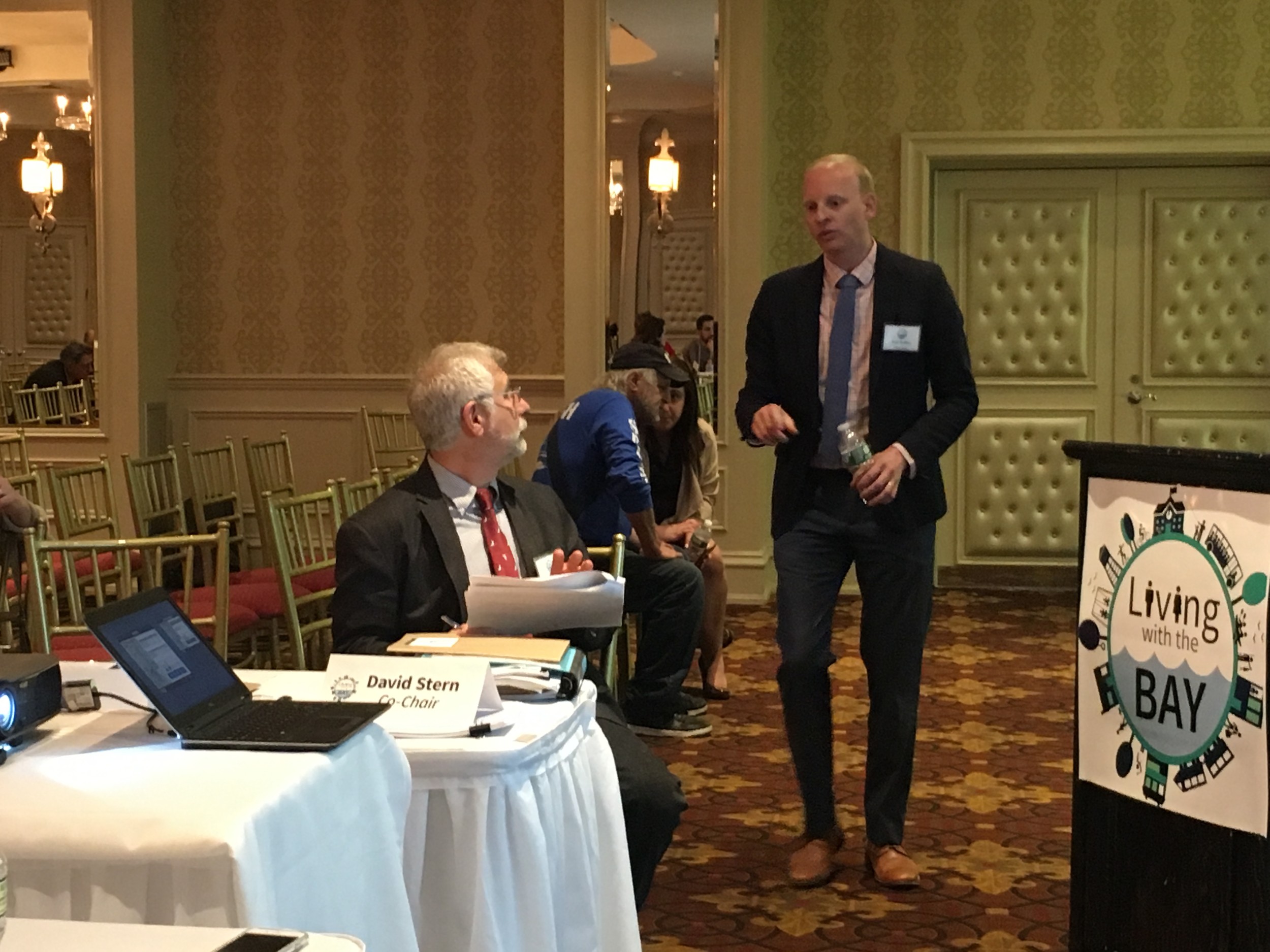Tetra Tech ranks Living with the Bay projects
On May 23, representatives from Tetra Tech, the California-based engineering and consulting company tasked with developing plans for the Living with the Bay initiative, presented the Citizen’s Advisory Committee with a system that ranks 36 proposed projects that would improve the quality of life for communities along Mill River.
The system would help the committee decide which of these projects would receive a portion of the $125 million that the Governor’s Office of Storm Recovery awarded to the group.
Living with the Bay falls under the GOSR’s Rebuild by Design initiative. Begun in the wake of Hurricane Sandy, its goal is to make South Shore communities along Mill River — which runs from Hempstead Lake south to Hewlett Bay, just south of Bay Park — more resistant to future storms, and to improve the quality of life in those areas. Potential projects for LWTB encompass parts of Bay Park, East Rockaway, Hempstead, Lynbrook, Malverne, Oceanside and Rockville Centre.
Tetra Tech’s system ranks a project out of a possible score of 100 based on its costs, benefits, risks, effects on vulnerable populations and based on GOSR’s ability to work with other municipalities. Lower costs, fewer vulnerabilities and fewer risks give a project a higher score, and so do greater benefits to a community and an increased ability to work with other municipalities. Benefits are weighted the most, but, “there’s not one single category that can outweigh everything else,” said Russ Dudley, an environmental engineer for Tetra Tech.
Dudley added that the system enables members of the committee to weigh the pros and cons of each project. “We are looking at so many different problems and projects, that we need a baseline comparison,” he said at the meeting. Ray Pagano, a member of the committee from Oceanside, agreed that the system makes sense. “As an engineer, I could understand that it comes down to the numbers,” he said.
Under the ranking system, a project to restore the shoreline behind East Rockaway Junior-Senior High School and protect the school from flooding was ranked in the low 40s. This project would elevate the sports fields by 9 feet because the school is losing shoreline by the bleachers. It would also create a living shoreline with storm water treatment systems from the high school up to Rockville Centre. It does not help a large number of people, however, and it is costly — leading to the low ranking.
Dan Caracciolo, a member of the CAC who represents East Rockaway, said that he supports the project even if it was not ranked very highly. “I’m going to fight for that one,” he said.
Each project needs to fit into at least one of Living With the Bay’s four main goals: Water storage, green infrastructure, leaving space for the bay, and history and education. The East Rockaway project would fit into the green infrastructure category and the history and education category because the high school could use the project to teach students about the environment. “I’m not necessarily worried [about] a project [if it] is relevant to East Rockaway, or even Lynbrook … [and] fits into all four categories,” Caracciolo said.
The rating system may not be perfect, however. Some of the rankings are based on subjective measures, which led to some confusion from the committee. At the meeting David Stern, one of the co-chairs of the CAC, said that he could not agree to the ranking system without knowing how Tetra Tech ranked some of the benefits. “You’re asking us for feedback on the prioritization [of the ranking system], but we don’t know ... what the methodology was to get to these numbers,” he said. In response, Dudley said that they used a Federal Emergency Management program to project how different storms and tidal phases would affect the population.
The next meeting of the CAC is scheduled for some time in late June, but the date and location had not been determined as of press time.

 47.0°,
Mostly Cloudy
47.0°,
Mostly Cloudy 




